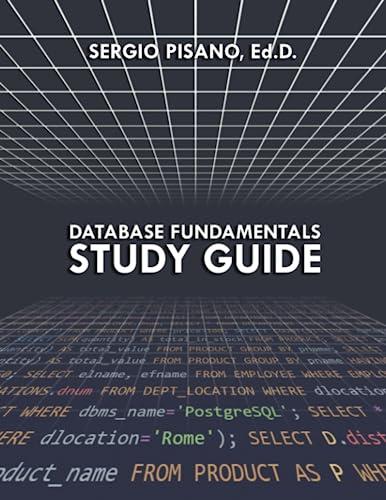Question
Please help cross check my work if that was done correctly. see the sample data below and the code i did. If there is a
Please help cross check my work if that was done correctly. see the sample data below and the code i did. If there is a modification kindly anoted it
import pandas as pd import mysecrets import requests from sklearn.linear_model import LinearRegression from sklearn.model_selection import train_test_split
# Load the data from the link data = pd.read_csv('bolttest.csv') data = data.fillna(data.mean()) # Extract the relevant columns and split into training and test sets X = data[["distance", "duration"]] y = data["upfront_price"] X_train, X_test, y_train, y_test = train_test_split(X, y, test_size=0.2)
# Train a linear regression model model = LinearRegression() model.fit(X_train, y_train)
# Make predictions on the test data predictions = model.predict(X_test)
# Check the difference between the predicted and metered price for prediction, metered_price in zip(predictions, y_test): if abs(prediction - metered_price) > 0.2 * metered_price: # Return the metered price if the difference is too large print(metered_price) else: # Return the predicted price otherwise print(prediction)
Part I: Data Analysis The key aspect of ride-hailing is upfront pricing, which works as the following way: First, it predicts the price for a ride based on predicted distance and time. This price is what you see on the screen of the phone before ordering a ride. Second, if the metered price based on actual distance and time differs a lot from the predicted one, the upfront price switches to the metered price. 'A lot' means more than 20%. For example, suppose you want to make a ride that upfront price predicts a cost of 5 euros. If the metered price is between 4 and 6 euros, you will end up paying 5 euros. You will end up paying something else if the metered price is anything less than 4 or more than 6 euros. No customer likes surprises (especially when it comes to money!), thats why we always strive to improve our upfront pricing precision for our customers smooth journeys. In the attached file you will find a sample data test.csv. Your task is to analyze this data and identify the top 1 to 2 opportunities that can help us improve upfront pricing precision. The expected output
| order_id_new | order_try_id_new | calc_created | metered_price | upfront_price | distance | duration | gps_confidence | entered_by | b_state | dest_change_number | prediction_price_type | predicted_distance | predicted_duration | change_reason_pricing | ticket_id_new | device_token | rider_app_version | order_state | order_try_state | driver_app_version | driver_device_uid_new | device_name | eu_indicator | overpaid_ride_ticket | fraud_score |
| 22 | 22 | 2/2/2020 3:37 | 4.04 | 10 | 2839 | 700 | 1 | client | finished | 1 | upfront | 13384 | 1091 | 1376 | CI.4.17 | finished | finished | DA.4.37 | 1596 | Xiaomi Redmi 6 | 1 | 0 | -1383 | ||
| 618 | 618 | 2/8/2020 2:26 | 6.09 | 3.6 | 5698 | 1 | client | finished | 1 | upfront | 2286 | 360 | 2035 | CA.5.43 | finished | finished | DA.4.39 | 1578 | Samsung SM-G965F | 1 | 0 |
Step by Step Solution
There are 3 Steps involved in it
Step: 1

Get Instant Access to Expert-Tailored Solutions
See step-by-step solutions with expert insights and AI powered tools for academic success
Step: 2

Step: 3

Ace Your Homework with AI
Get the answers you need in no time with our AI-driven, step-by-step assistance
Get Started


